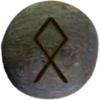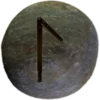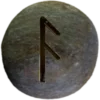Last Updated on January 7, 2025
Table of Contents


A Hof (pronounced “hohf”) serves as a sacred space in Asatru traditions. The term “Hof” originates from Old Norse, where it referred to a temple or hall dedicated to the gods. The plural form, “Hofir” (pronounced “hoh-veer”), highlights its collective nature when referring to multiple sacred sites. These buildings range from small, humble structures to grand halls resembling Viking longhouses.
Historically, Hofir often functioned as places for communal worship, rituals, and feasting. Their design reflected Norse architectural styles, with timber frameworks, high roofs, and intricate carvings. Many Hofir featured a central hearth, symbolizing warmth and connection to the divine. Archaeological findings suggest Hofir were prominent during the Viking Age, serving as focal points for religious and social gatherings.
Modern Asatru practitioners replicate Hofir for their spiritual needs. These spaces honor the Æsir and Vanir gods, housing altars for offerings and sacred tools like horns and bowls. Some Hofir feature statues or symbols of gods such as Thor or Freyja, connecting the worshippers to divine energies. The Hof becomes a bridge between the human and spiritual realms, fostering a sense of belonging and reverence.
Hofir also host seasonal blóts, or sacrifices, celebrating key events like the solstices and equinoxes. Ceremonies often include mead offerings, storytelling, and invocations. Each Hof carries its unique character, influenced by the community that maintains it. While some Hofir stand in private spaces, others welcome broader Asatru communities for shared rituals.
The Hof represents more than just a physical location. It embodies the values of kinship, tradition, and spirituality. Whether ancient or modern, these sacred halls reinforce the deep connection between Asatru practitioners and their gods.
Runes and the Hof
The Elder Futhark rune Gebō (ᚷ), representing gifts, connects strongly with the Hof. The act of offering gifts to the gods reflects Gebō’s essence. Blóts conducted in a Hof symbolize the exchange of blessings and gratitude between humans and divine forces.
The rune Othila (ᛟ), meaning inheritance, also resonates with the Hof. It represents ancestral ties and sacred traditions. A Hof preserves these bonds, providing a space where rituals honor both the gods and forebears. Together, Gebō and Othila embody the spirit of reciprocity and continuity central to Hofir. ![]()
Its Importance to Asatru
A Hof plays a vital role in Asatru by offering a dedicated space for worship, reflection, and community. It serves as a tangible link to the divine, where practitioners connect with their gods and ancestors.
For Asatruar, the Hof fosters unity and shared purpose. Seasonal celebrations bring members together, strengthening bonds within the kindred. The rituals performed in a Hof renew spiritual energy and deepen one’s connection to tradition.
Modern Hofir also provide a haven for education and cultural preservation. They allow Asatruar to pass their beliefs to future generations, ensuring the faith’s endurance. By anchoring their practices in sacred spaces, practitioners reaffirm their devotion and collective identity.


